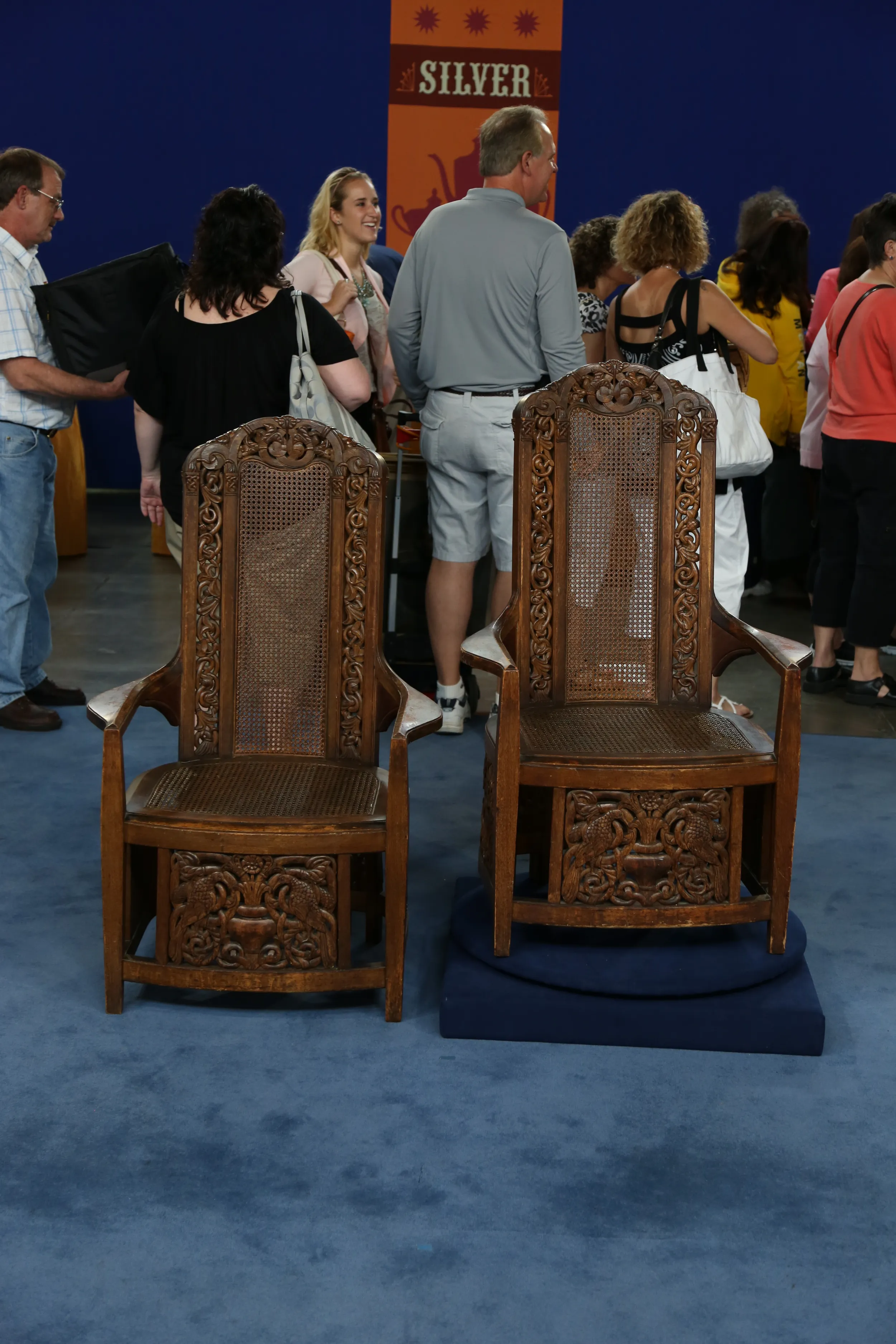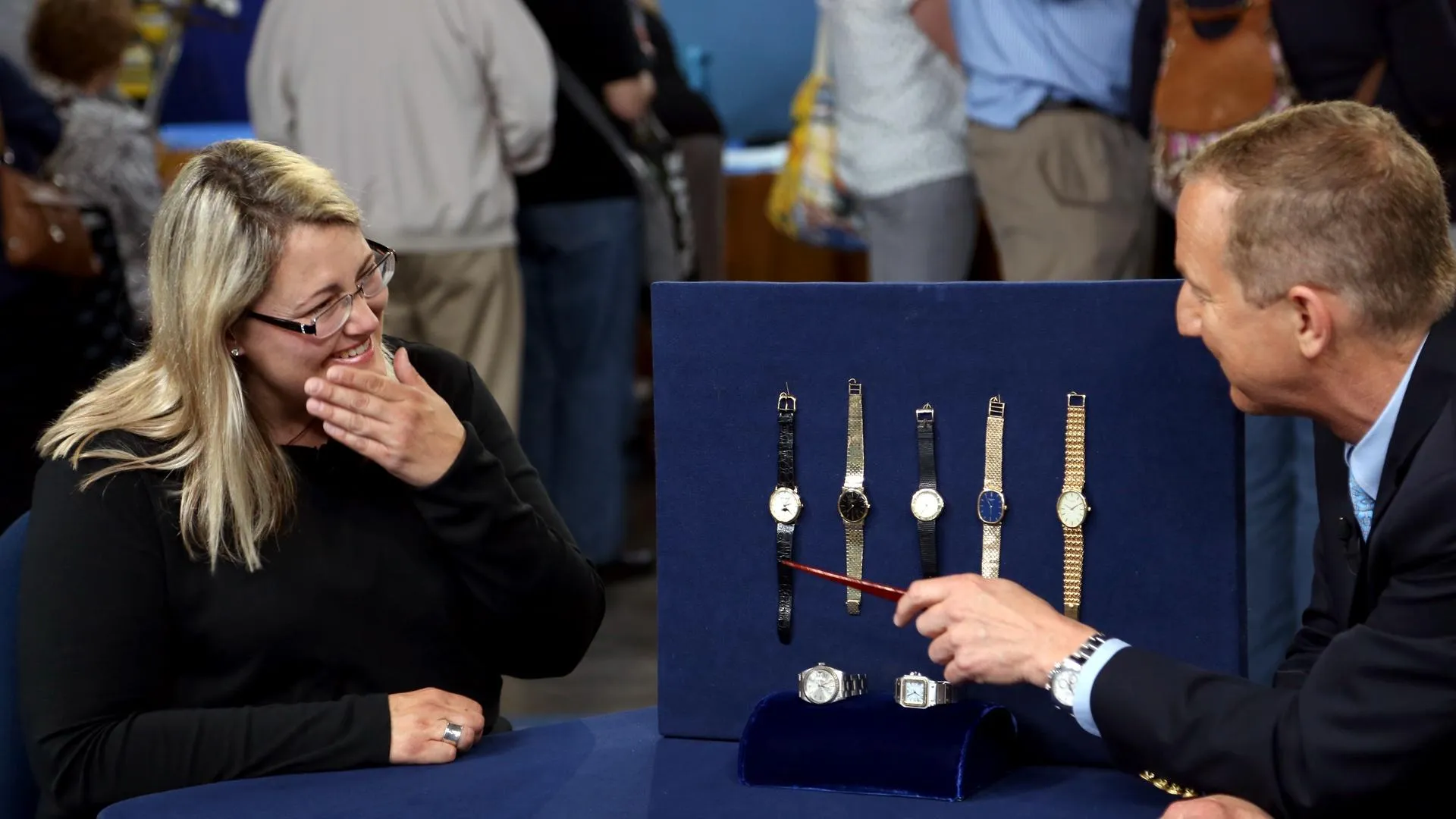GUEST: In the 1970s, my mother was doing a decorating project in her home, and these chairs showed up. I was a teenager and I didn't take much notice of them. Flash forward to 2005, they're in my home and I began to look at these chairs and thought they really are special, and I wish I would have asked her what she knew about them, but I never did. One day, I was on the treadmill and a woman got on the treadmill next to me and she was telling me about her historical home in Indian Village in Detroit, and she said her home is very historical and she has pictures of her house. I thought she was just going to bring in some snapshots, but she brought in this book. And I'm going through all the pages of the book, and I look and there are the chairs. I was shocked. I looked at the author of the book, Dr. Thomas Brunk, who's a historian at Wayne State University, and I called him. He was thrilled that I have these chairs because there's only five pieces that he knows of in the United States that exist, and these were two of them. Since then, I've had him come to my house and speak at different groups and lecture about the chairs.
APPRAISER: As you well know, these two chairs were designed by Leonard Willeke, an architect in Detroit for the Jackson home on Iroquois. Willeke produced furniture for a few houses, but none has ever sold.
GUEST: That I know of.
APPRAISER: Yeah, that I could find either. He was very well-known here in the area, designed houses for Henry Ford, among others. And he did not only the design of the home, but in some cases the interior furnishings like this. And even in some cases, he went further and did the landscaping. He was very skilled and understood both historical elements of design and contemporary elements of design. And we can see all of that in these chairs here. He draws on the Aesthetic Movement from the late 19th century in parts of this design and then moves into the Art Nouveau and then even some elements of Craftsman. What's fascinating about them is that these really are architecturally designed chairs for a specific spot to be seen in a specific way. And if we look at the chair from the front, we can see the crest coming down the stiles with these arms that expand out, and then this frieze at the bottom under the seat. And this theme is continued throughout the chair, so we see it on the sides again. And my favorite spot is the back. They're made of walnut, and you could see that this chair is almost as attractive from the back as it is from the front. Do we know who made them?
GUEST: Alfred Nygard carved the chairs, and I believe he worked for the Pullman Company in Detroit.
APPRAISER: You have absolute documentation, we know exactly who made the chairs, who they were made for and where they sat. Very uncommon. In terms of late 19th and early 20th century furniture, that is the epitome of what people collect. So when it gets to price, how do you determine price on something that's never sold?
GUEST: Yes.
APPRAISER: So it really becomes a guess. Challenging to price, but again, no limits on what it could bring because we really don't know. As an auction estimate, I think the pair would sell for $8,000 to $12,000. But if all the stars aligned, it could do two, three times that. I mean, we really don't know. The market would determine the value when they were ever sold. If I were to insure them, though, I would insure them for probably $20,000 for the pair. For the pair.













